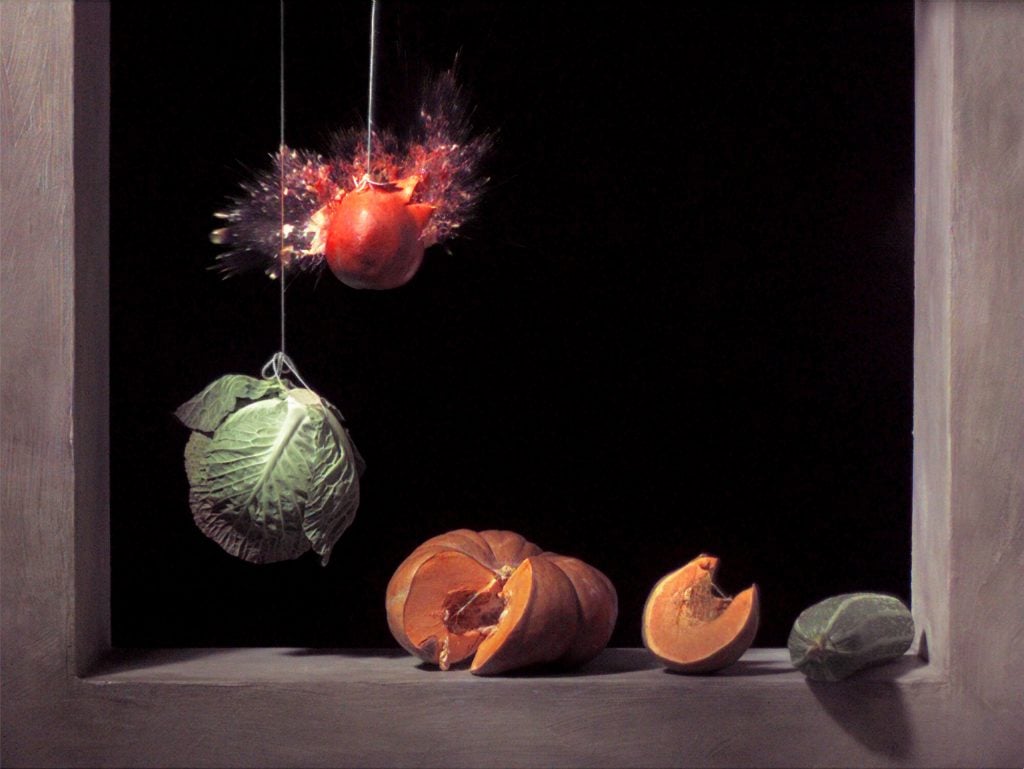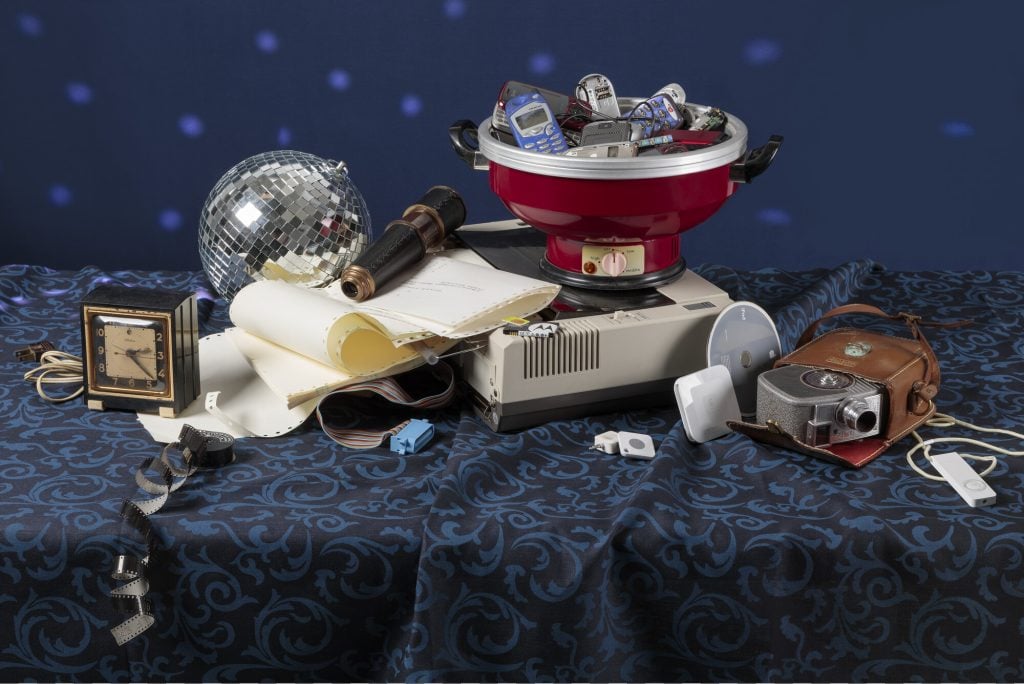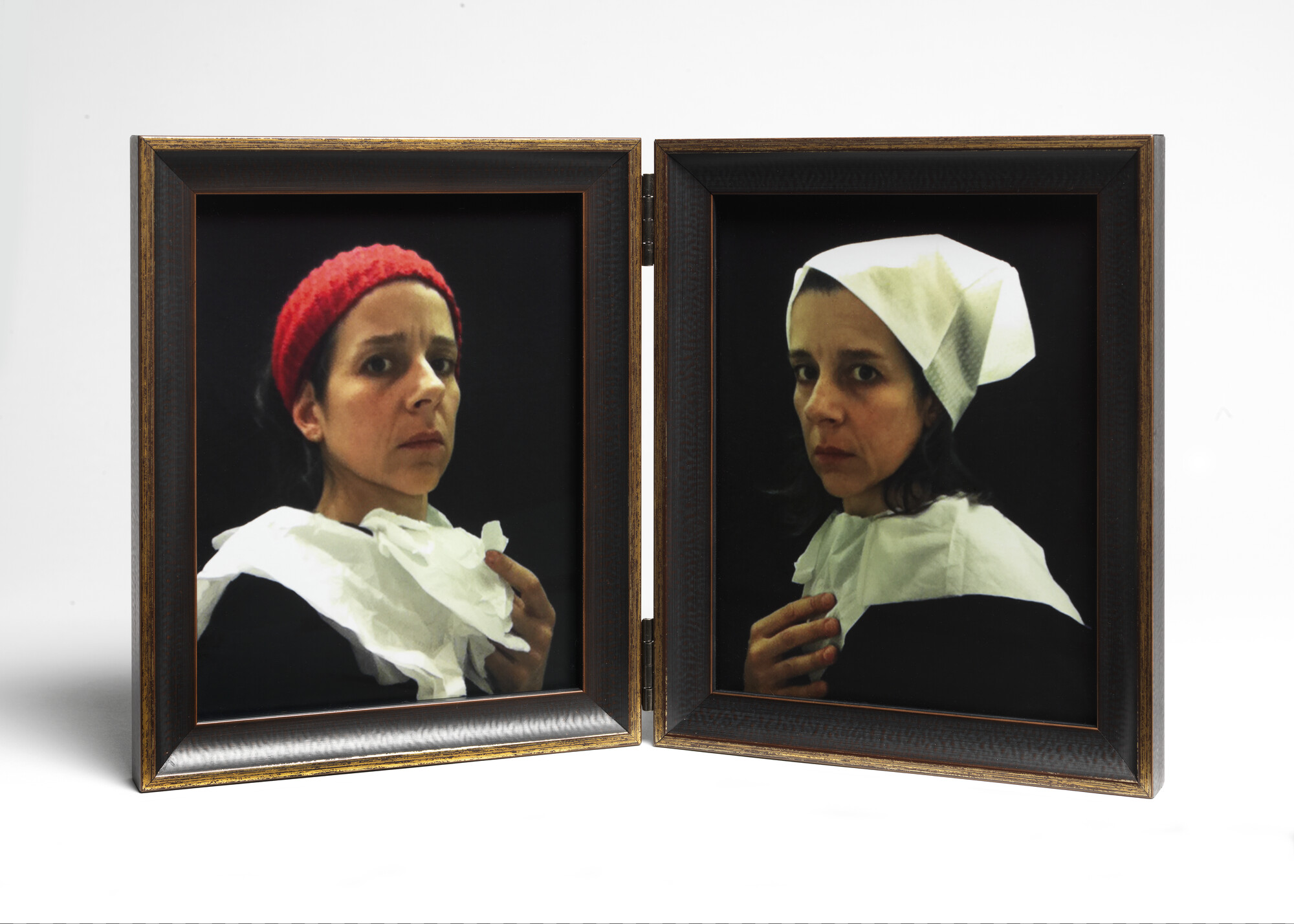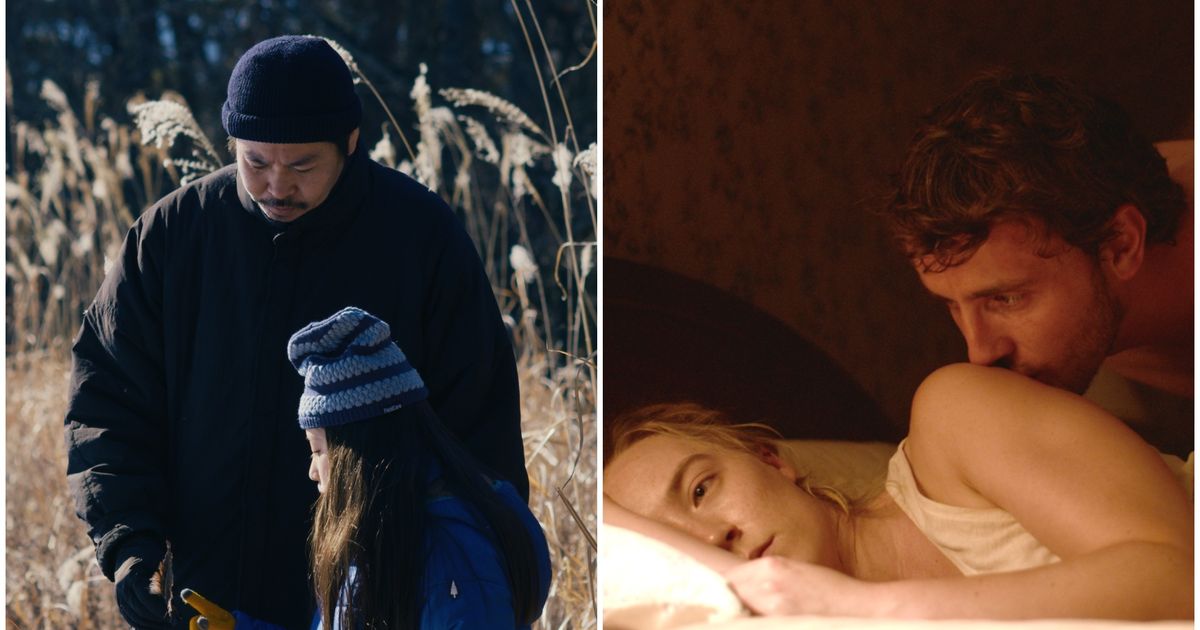Knowingly or not, every artist references the history of their craft eventually. Some do it to situate their own work in the lineage of greats, others to question the monolithic canon.
Recently opened at the Princeton University Art Museum’s gallery Art on Hulfish is an exhibition of lens-based artists who look to Leonardo, Van Eyck, and other Old Masters for material. Their strategies and intents vary but ultimately lead to the same comforting truth.
If this sounds like homework, it’s not. The show, like the last gasps of summer vacation alongside which it arrives, is light and warm. The art historical easter eggs are there for the nerds, but so is Vik Muniz’s charming 1999 photograph of the Mona Lisa recreated, in Warholian fashion, with peanut butter and jelly. You don’t need a PhD to appreciate what the artist is doing with that picture.
Vik Muniz, Double Mona Lisa (Peanut Butter and Jelly) (1999). © Vik Muniz.
“Some of the art is serious. But I hope people come and laugh,” said Ronni Baer, the Princeton curator who organized the show. For her and the museum, the show checks several boxes. It’s historical but also contemporary, educational but enjoyable. It’s legible, and it also serves to remind visitors of the museum’s programming while its main building is being reconstructed on campus.
(David Adjaye, the Ghanaian/British architect recently accused of sexual harassment and assault, designed the new Princeton University Art Museum. Though Adjaye has stepped away from numerous projects in light of the allegations, Princeton has said that the museum is too deep into construction for the school to distance itself from him now. The new museum is expected to open in 2025.)

Ori Gersht, Pomegranate (Off Balance) (2006). Courtesy of the artist.
The exhibition, Baer said, points to the past but feels like the present. “The idea of searching for identity is something embedded in a lot of this work—and it’s as relevant then as today,” she said, referring to works like Yasumasa Morimura’s Daughter of Art History (Princess A) (1990), for which the older male artist recast himself as the young female subject of Diego Velázquez’s Portrait of the Infanta Margarita Aged Five (1956), and Nina Katchadourian’s “Flemish Style” self-portraits made in an airplane bathroom.
As with these stately Renaissance portraits, the still-life is a popular point of departure in the show. Included are pictures of bouquets by Sharon Core, who painstakingly grows her own horticultural specimens, and Bas Meeuws, who pulls examples from his personal library of floral photographs and reassembles them digitally.
A 2006 video by Ori Gersht recreates Juan Sánchez Cotán’s Quince, Cabbage, Melon, and Cucumber (circa 1600) with pomegranate substituted in—a symbol of the violence that defined the artist’s childhood in Tel Aviv. (In Hebrew, the word for “pomegranate” also means “grenade.”) Gersht also layers on a reference to Harold Edgerton as a slow-motion bullet pierces the pomegranate halfway through.

Jeanette May, NY Tech Vanitas: Dot Matrix (2018). Courtesy of the artist.
Nearby, Jeanette May’s NY Tech Vanitas: Dot Matrix (2018) nods to the eponymous genre of still-life paintings popularized by the Dutch in the 17th century, which employed objects of pleasure to remind viewers that our time on this mortal coil is limited and shouldn’t be wasted on indulgences. But instead of the decadent snacks and emptied wine carafes favored by Golden Agers like Willem Claesz Heda, May has filled her frame with pieces of outmoded, obsolescent tech: flip-phones, a CD-ROM, a printer that uses—gasp—perforated paper.
“All of it adds up to nothing, both then and now,” Baer said, somewhat jokingly, before putting a bead on the central idea of the show. “These themes,” she went on, “are centuries old. They’re human concerns about identity and the fleetingness of life and about how we choose to live.”
“Art about Art: Contemporary Photographers Look at Old Master Paintings” is on view August 19 through November 5, 2023, at the Princeton University Art Museum’s Art on Hulfish gallery.
Follow Artnet News on Facebook:
Want to stay ahead of the art world? Subscribe to our newsletter to get the breaking news, eye-opening interviews, and incisive critical takes that drive the conversation forward.


